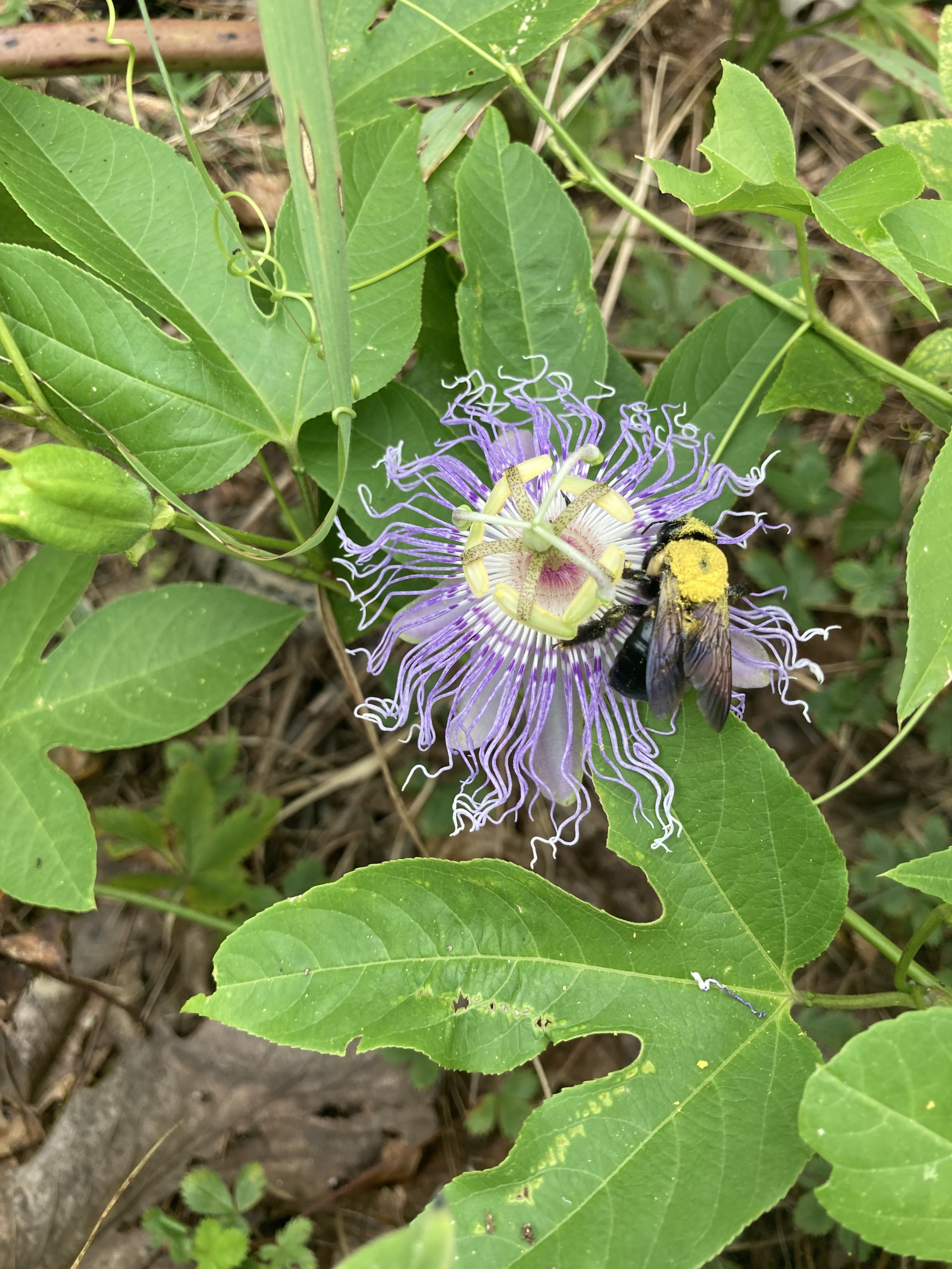Why, you may ask, does Passionflower have those weird stamens nestled face-down around the center of the flower? Let this friendly Carpenter Bee show you. First photo shows how it has to crawl under those stamens to get to the nectar. Second photo shows the results: someone’s back is covered with dusty yellow pollen.
These bees and these flowers seem to have an understanding.

